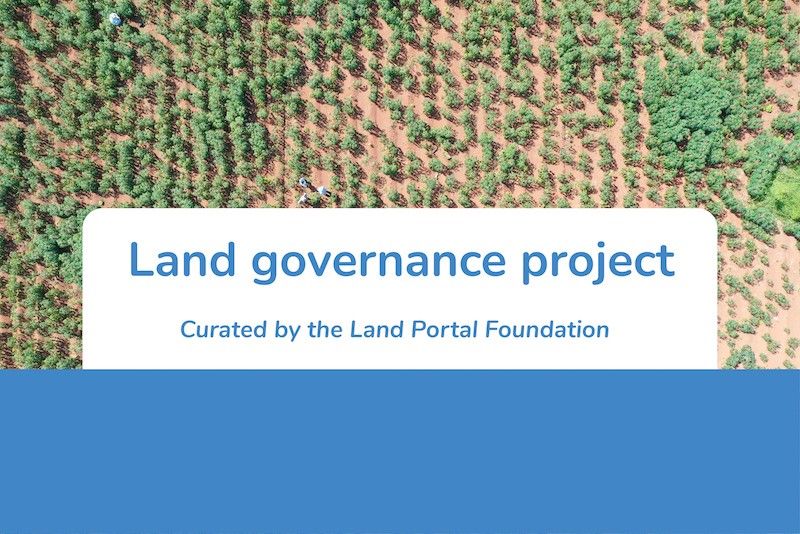Community / Land projects / Integrated low-carbon and conservation investments in Argentinian cities
Integrated low-carbon and conservation investments in Argentinian cities

€20729587.13
02/22 - 05/26
Actif
This project is part of
Implementing Organisations
Donors
Data Providers
Objectives
Accelerate the sustainable development of Argentine cities to reduce greenhouse gases, conserve biodiversity and reduce land degradation.
Other
Note: Disbursement data provided is cumulative and covers disbursement made by the project Agency.
Target Groups
The GEF-7 project aims to generate social, economic and environmental benefits for Argentina and its citizens. Social benefits: The project aims to create significant social benefits for local city populations by applying an integrated approach which facilitates collaborative and participatory urban development, leading to more inclusive cities. For instance, the development of project plans and pilot investments will be designed through participatory processes in each city. This will ensure that the concerns, needs and priorities of residents, local communities and civil society organizations will be considered and incorporated in such interventions, leading to outcomes that respond to social needs. Furthermore, many of the project investments focus directly on making city spaces more people-centred. For instance, the sustainable city pilot in Mendoza (output 2.3) promotes tactical urbanism which focuses on putting people at the centre of urban development. Such investments will lead to city spaces that are more considerate of people’s needs and choices, including as related to those of women, children, the elderly and vulnerable and disabled people. This will include enhanced access to urban green spaces, with concomitant benefits in terms of mental and physical well-being. The investments will also lead to the introduction of technologies that bring positive health impacts, such as building insulation, which provides a more climate-friendly environment, and the consumption of locally-grown agricultural products following circular economy practices. Furthermore, the project will promote sustainable waste management as way of formalizing formerly marginal activities (such as informal waste sorting by low-income groups). The project also focuses directly on low-income and social disadvantaged groups in the target cities, with the aim of enhancing the provision of urban services and infrastructure to enhance their social well-being and quality of life. Concretely, the project aims to accelerate social integration of excluded urban communities through the following:- In Mendoza project investments will focus on increasing public and active transport connectivity to the La Favorita low-income neighbourhood, as well as creating new economic opportunities through the creation of a sustainable hub in that area (output 2.3), while residents of fragile pre-cordillera piedmont ecosystems will benefit from development and implementation of a sustainable use plan for these areas.- In Salta, the project will support the development of plans and investments that increase public and non-motorized transport connectivity and urban green spaces through a low-emission green corridor connecting the city centre to the Juan Manuel de Rosas low-income neighbourhood. It also aims to create new economic opportunities through the piloting of a waste management facility in the area (output 2.6). Finally, through its support for ‘far away’ forest communities, the project will harness urban demand in order to support sustainable livelihoods through production of biodiversity-based products in the ecologically linked Las Yungas area whilst generating socio-economic benefits to kolla indigenous groups (including kolla indigenous groups (El Lipeo and Baritu Aboriginal Community and Arazay Originary Community), in Las Yungas- In Ushuaia, the project will support the incorporation of sustainable neighbourhood concepts, including sustainable construction designs, into the newly developed San Martin neighbourhood. The City of Ushuaia has created the neighbourhood, including with support of the national PROCREAR programme, to address housing deficits and award housing lots to low- and middle-income families. GEF funds will build upon this investment to ensure that the neighbourhood address housing shortages in a sustainable way, leading to greater social benefits for local residents. The project will support conservation of green space in and around San Martin, as well as of world-class recreational opportunities that are enjoyed by local residents and tourists alike. In addition, local communities from the El Escondido vulnerable neighbourhood will be engaged in conservation tourism activities where a special focus on the engagement of youth and women will be sought.- In Buenos Aires, the project will focus on supporting the development of plans and investments to increase public and non-motorized transport connectivity and urban green spaces through a low-emission green corridor in the low-income neighbourhoods in the autonomous city’s southern region. These initiatives aim to reduce the social exclusion of these communities.- In Mar del Plata, mental and physical well-being of local residents will be enhanced through continuing and improved access to multiple natural sites and associated recreational opportunities, including walking and biking, in and around the city. The project is also expected to make a significant contribution towards gender equality (see the gender analysis and action plan in Annex Rof UNEP's project document for details). Economic benefits: Through its component 3, the project aims to directly lead to economic benefits for Argentine municipalities, by enhancing the availability of financial offer for investing in sustainable urban development. The project also focuses on creating economic benefits for civil society and the private sector, including through support for sustainable livelihoods in peri-urban areas. On the former, through the development of integrated plans in component 1, the project aims to lead to reduced travel times (through prioritization of public and non-motorized transport) and reduced energy usage costs (through uptake of efficiency measures) for communities, resulting in increased productivity and household savings. The project also aims to directly kick-start new economic opportunities for the private sector. Building on component 2 investments, business models will be developed to support the scale-up of the component 2 pilots with the aim of catalysing new opportunities for private sectors in areas such as transport, energy services and waste management. On waste management, a focus will be directly placed on stimulating new private sector engagement in circular economy activities in Mendoza (through the sustainable hub) and Salta (through the pilot waste unit at the San Javier waste facility). In Mar del Plata, the project’s plans and investments focus squarely on decentralizing tourism through the creation of new (eco)tourism offer, with the co-benefit of creating new opportunities for tourism providers away from the saturated city centre. In addition, the project will support agro-ecological production in an ecologically sensitive protected area buffer zone and agricultural greenbelt, benefiting primarily Bolivian immigrant workers who engage in agroecological practices. In Mendoza, sustainable land management practices in the piedmont peri-urban area will be tested involving local producers from the livestock sector and promoting tourist visitation. In Salta, alternative and sustainable livelihood options will be created through the Salta-Las Yungas Conservation Partnership for local communities and local kolla indigenous groups. Furthermore, in Ushuaia, collective purchasing models for construction materials will be developed under component 3 with the aim of reducing costs for the use of such materials. This aims to lead, on the one hand, to increased usage of such materials, and on the other hand to economic benefits to construction companies that advance in promoting such sustainable construction. Residents of Ushuaia’s San Martin and El Escondido neighbourhoods will also benefit from new economic opportunities (guiding, trail management, etc.) associated with expanded ecotourism in local forest and peatland areas.Social benefits: A second category of benefits, which in some cases can be translated, or converted, into economic terms (in others not), consists of the social benefits derived from increased access to green space, both within urban centres and in urban and nearby protected areas. The project’s support for green space establishment and conservation has the potential to make a significant contribution to the well-being of urban residents in each of the five pilot cities. Benefits are associated with recreational opportunities that encourage residents to spend increased amount of time outdoors in natural surroundings. In addition to physical and health benefits associated with enhanced opportunities for exercise (walking, biking, etc), a range of additional health and wellness benefits, including enhanced cognition, arise from the restorative benefits of nature exposure. As noted, such benefits have an economic component as well, via improved health and wellbeing and enhanced productivity.Environmental benefits: In addition to the global environment benefits mentioned in other sections of this document (see section 1b.6, for example), the project also aims to have local and national environment benefits. It aims to improve urban air quality as a result of the implementation of sustainable mobility policies which prioritize public and non-motorized transport, including through restrictions on private vehicles through pedestrianization (for instance, in the Mendoza sustainable centre, output 2.3). The project also aims to lead to less solid waste disposal and consequential land and ground water contamination through the promotion of circular economy activities in Mendoza, Salta and Ushuaia. Such activities include those to promote re-use, separation at the source and recycling of waste materials, with the aim of reducing waste deposited in rubbish dumps. Such circular economy activities also aim to reduce the demand for new natural resources. Furthermore, the development of financial schemes to support protected natural areas aims to contribute to the preservation of environmental resources and their services.Climate-resilience benefits: Building resilience has become an increasingly important objective in recent years as human society begins to come to terms with the “volatile shocks and stresses” that are emerging due to climate change. By considering cities as “dynamic systems” that need to adapt in the face of climate change, a resilience-based approach to mitigation, adaptation and disaster risk reduction can suggest an array of tools for urban planners and managers going forward. Among the most useful type of tools in this regard are nature-based solutions (NbS), which focus in the climate-biodiversity-human well-being nexus and have the capacity to provide social, environmental and economic benefits (see preceding paragraphs) while simultaneously building resilience to increasingly frequent and severe disturbances. In an urban context, such solutions need to “bring more and more diverse nature and natural features and processes into cities…through locally adapted, resource-efficient and systemic interventions”.[1] Through its biodiversity and land degradation elements, the project will deliver nature-based solutions which, among other benefits, will enhance the resilience of urban and surrounding ecosystems to climate change. These include green corridor and tree planting in CABA, Mendoza and Salta to reduce heat island effect through natural cooling, as well as enhance water and light absorption. Through component 1, the project will also promote the undertaking of integrated planning processes which consider the integrated nature of low-carbon and biodiversity-conservation development, including climate resilience in all focus urban areas. Such planning processes will consider climate projections in undertaking urban planning (as well as other projections such as those related to socio-economic factors), to ensure there is, among other things, adequate policy space to enhance resilience and adaptation to the effects of climate change. [1] European Commission. 2020. Nature-Based Solutions: State of the Art in EU-funded Projects. Pp.7. DOI10.2777/236007. https://op.europa.eu/en/publication-detail/-/publication/8bb07125-4518-11eb-b59f-01aa75ed71a1




